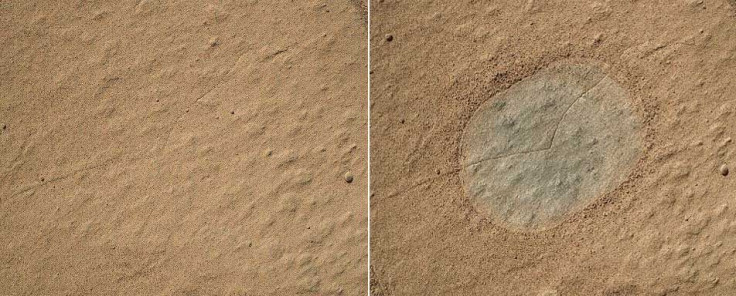Curiosity Mars Rover Set For Third Drilling On Martian Surface: NASA

NASA announced Tuesday that its Curiosity Mars rover is preparing for its third drilling into a rock on Mars over the next few days to collect a sample for analysis.
According to the space agency, Curiosity used several tools to examine the target area on the Martian surface, including a wire-bristle brush called the Dust Removal Tool to clear away dust from a patch on the slab of sandstone being studied, which has been named by scientists working on the project as “Windjana,” after a gorge in Western Australia.
“We want to learn more about the wet process that turned sand deposits into sandstone here,” John Grotzinger, of the California Institute of Technology and a Curiosity project scientist, said in a statement. “What was the composition of the fluids that bound the grains together? That aqueous chemistry is part of the habitability story we're investigating.”
The first two Martian rocks drilled and analyzed by Curiosity were mudstone slabs located near each other in an area called “Yellowknife Bay,” which lies about 2.5 miles northeast of the rover's current location at a waypoint called “The Kimberley.” Examined in 2013, the slabs provided evidence of an ancient lake-bed environment on Mars with key chemical elements and a chemical energy source that might have provided favorable conditions for microbial life billions of years ago.
NASA also stated that, before Curiosity drills deeper into the rock to collect rock-powder sample, there will be a preparatory “mini-drill” operation on the target, as a further check for readiness. Typically, after collecting powdered samples from the interior of a rock, Curiosity prepares and delivers portions of the sample to onboard laboratory instruments. And, from planned drilling on sandstone at Windjana or some nearby location, scientists hope to analyze the cement that holds together the sand-sized grains in the rock.
“In the brushed spot, we can see that the rock is fine-grained, its true color is much grayer than the surface dust, and some portions of the rock are harder than others, creating the interesting bumpy textures,” Caltech's Melissa Rice and a Curiosity science team member, said in a statement.
© Copyright IBTimes 2024. All rights reserved.






















